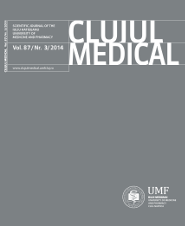Chemotherapy-Induced Cardiotoxicity: Pathophysiology and Prevention
DOI:
https://doi.org/10.15386/cjmed-339Keywords:
cardiotoxicity, chemotherapy, cardiomyopathy, prevention, cardioprotective drugsAbstract
Along with the remarkable progress registered in oncological treatment that led to increased survival of cancer patients, treatment-related comorbidities have also become an issue for these long-term survivors. Of particular interest is the development of cardiotoxic events, which, even when asymptomatic, not only have a negative impact on the patient`s cardiac prognosis, but also considerably restrict therapeutic opportunities. The pathophysiology of cytostatic-induced cardiotoxicity implies a series of complex and intricate mechanisms, whose understanding enables the development of preventive and therapeutic strategies. Securing cardiac function is an ongoing challenge for the pharmaceutical industry and the physicians who have to deal currently with these adverse reactions. This review focuses on the main mechanism of cardiac toxicity induced by anticancer drugs and especially on the current strategies applied for preventing and minimizing the cardiac side effects.
Downloads
Published
How to Cite
Issue
Section
License
The authors are required to transfer the copyright of the published paper to the journal. This is done by agreeing to sign the Copyright Assignment Form. Whenever the case, authors are also required to send permissions to reproduce material (such as illustrations) from the copyright holder.

The papers published in the journal are licensed under a Creative Commons Attribution-NonCommercial-NoDerivatives 4.0 International License.

